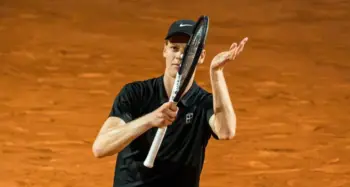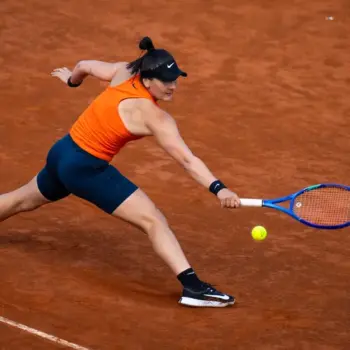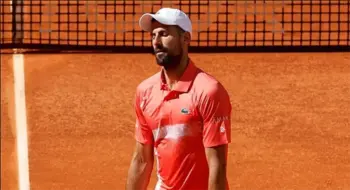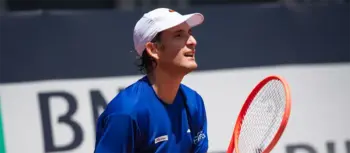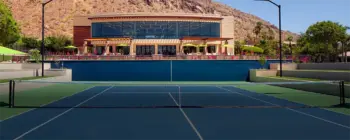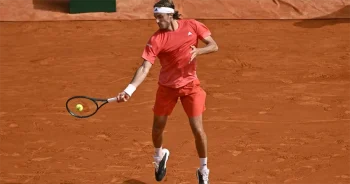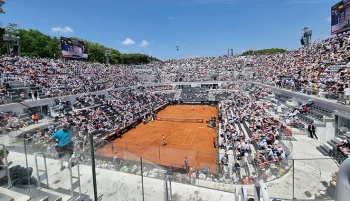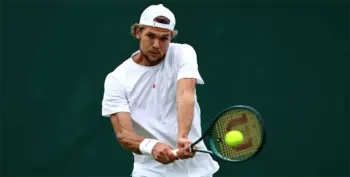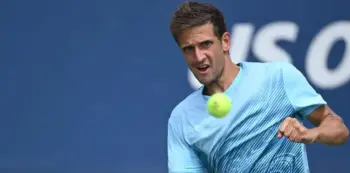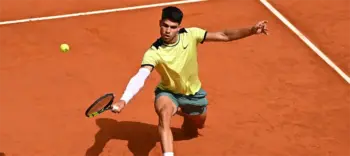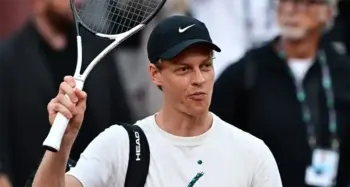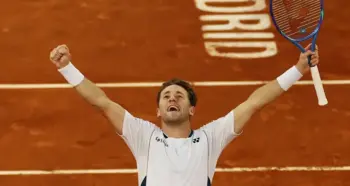We have a very interesting guest post from Kevin Zebroski titled: Why Is Tennis More Awkward Than Dating?
Why Is Tennis More Awkward Than Dating?
I’ve been promiscuous lately. Indiscriminate. I go to the park alone, often at night, and I’ll hit with whoever’s there. I’ve learned to be less judgmental. The social part of tennis… No matter how extroverted you are, it’s weird asking someone to hit. It takes guts. The awkwardness lingers as you get to know who’s on the other side of the net, and it doesn’t go away until they know you, too.
Few other sports require you to look at your opponent so much. Boxing, sure, and there’s all that hugging in the clinch. Wrestling can look very intimate without context. But there’s a level of fumbling awkwardness you only find on courts and in bedrooms, an uncomfortable metaphor that everyone involved seems to be vaguely aware of, and which makes the daunting task of asking a stranger to hit even more fraught.
Like anything, it gets easier the more you do it. The nerves wear off. It becomes less special.
Bad hits are like bad dates.
We’ve all had bad hits. The other person keeps putting the ball out wide, shanking, swinging too hard too early. You get frustrated and can’t show your best self. It’s weird. It’s not you, it’s them, but you want to say the opposite, to put it behind you and go home to take a long shower. It only gets better once you put yourself back out there. Replace the bad with some good.
More experienced players know you must be a little more cooperative, at least at first. A few easy ones down the middle, and then get into it full pace once you’re both warmed up. Younger people tend to try to blast it straight off. It just doesn’t work. That’s a recipe for mishits, and it’s embarrassing for both parties involved.
Differences in skill, experience, style… It’s all there on display from the second you step on the court. If you’re alone, bring a hopper and hit some serves. Try to make them loud. Feel the side-eye. It’s real. They’re taking the temperature. You might be reminded, depending on who’s there, of a college bar scene. Everyone’s trying to figure out who’s worth their time, and how they stack up. It’s human nature at its most reductive and transactional.
Sniffing for pedigree
A newcomer. And you feel their presence sometimes like a wash of cold air. They’re too good. A quick pace and the clean cracking sound of a well-rehearsed forehand. Your partner keeps looking. You do, too. Maybe an ex-D1 player. Who knows?
People will ask, “Did you play in college? Did you take lessons growing up?” They’re sniffing for pedigree, maybe, or protecting their own ego if things don’t work out.
But it’s not all so shallow. Some of this is just a matter of compatibility. Hotheads (Rublev or Safin) hate pushers (Medvedev or Santoro) and try to size them up before things get too serious. It’s easy to tell. Pushers usually have a cyclist’s legs and arms.
Your idol and your style
Shorter folks with frozen shoulders tend to hate topspin types. Given the way age affects spinal erectness and cartilage integrity, this is often an age-related mismatch. Luckily, simply, the acolytes of Nadal all use the same racquet. Aeros, always, and the last few paint jobs are a brash enough yellow to clock from miles out.
But sometimes an Aero just means you were ten years old in 2004. Nadal was your hero, and that guy in the pro shop who sold it to your parents liked the wide-open string pattern because it meant he could string both of your sticks inside a single episode of Entourage.
The current generation of high and heavy junkballers use Aero 98’s now because it’s the Alcaraz racquet, and there’s a feeling of getting older out there watching the head-size shrink. I’m not that young. I’m the right age to play a high schooler on TV. The sexagenarians out there still hitting make me feel even younger. They’re kinder as a rule, more forthcoming with praise because they know how hard it is to find the right person to have a clean hit with. They’ve learned, or at least some of them have, how to become the right person. It’s simple, at least in theory. Be polite, keep the ball in the middle with good pace, and don’t take the mistakes too hard. It’s all good. Everyone’s trying their best. And if they’re not, who cares? Plenty of fish.
It’s not you, it’s me…
We focus so much on ourselves in tennis, on our own technique, our gear and plans of attack. But I’ve realized, mainly from hitting with so many strangers in public, that it’s more about them. You’re always hitting their ball back. With hours on the court, experience, time, lessons, a gluten-free diet, enough sleep, the right Youtube videos, a matching bag of three matched racquets, sweatbands, padded socks, a color-coordinated Nike Rafa kit, and decent cardio, you can become incredibly solid out there. You can make yourself good enough to hit with anyone. But you’ll always have to react to what’s on the other side of the net, whether they’re a beginner or a blue chip. You’ll always be half.
It’s why Federer and Nadal held hands at the Laver Cup. They spent their lives trying to kill each other, sharpening. There’ll never be another Federer, and don’t you think Nadal knows that? It has to feel like a hole.
And in the smaller, slower version of the game played in parks and tennis clubs, it’s the same story in miniature and multitude. Off-screen, a thousand love stories starting and finishing with less fanfare and with all the same pieces. Hit and return until you know each other, until it feels automatic.
And if you’re bad with people, there’s always the wall. Or a Lobster. Robots are getting more sophisticated every day.
About the author
Kevin Zebroski is a fiction writer from New York. He has an MFA in Fiction from the Iowa Writers’ Workshop.



